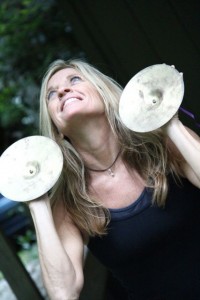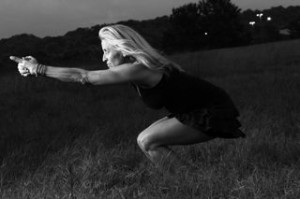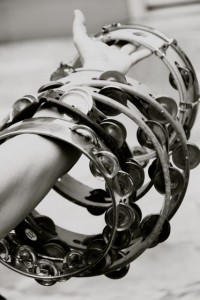We are connected…
We are connected… anyway.
Help your neighbor… it lifts all boats.
Listen to your enemy … with an open mind.
Sit in your breath… the world breathes together.
Open your heart… your Truth awaits.
Feel your symptoms… your body is talking.
Honor the Earth… She is home for all.
Connect with your highest Self… always available.
May your connections be real, true, healthy, and joyous…
We are One.
What Makes You Happy?
Use it or Lose it…
Use your strength… or lose it.
Use your mind… or lose it.
Use your joy, your presence, your peace…
Use your greed… or lose it.
Use your fear… or lose it.
Use your worry… or lose it.
Use your money… or you might as well lose it.
Use your talent… or lose it.
Use your generosity… or lose it.
We are who we are… changing constantly.
With the ever-available opportunities to be present and aware… kind and grateful.
How fun? How exciting? How dramatic? How Powerful?
Use your life… or lose.
Listen…

Listen…
To your body… pain or sore?
To your words… dark or light?
To your breathing… easy or tight?
To your heart… it is always right.
Listen…
To your Mom … wisdom and time…
To your dreams… truth in the night.
To your the Earth… she is whispering…
To your Soul… Love without fright.
Off Road Drumming
Ok… last one… MD published a few my health tips for working drummers… it still applies…:)
Thanks for reading!
OFF ROAD DRUMMING…….
by Jennie Hoeft
Imagine spending 4 hours a night on a busy airport runway, without earplugs….
Imagine yourself as the baggage clerk, loading, hauling, and heaving heavy luggage.
Imagine yourself as a bartender, pleasing customers, breathing everyone’s smoke, and yelling “drink, drink, drink!!!!”
Now, picture yourself as the conductor of a fine symphony. Ears open, in tune with every player on the stage, master of your craft, and the center of musicality for the next two hours. We, as drummers, are all of these, simultaneously. We expose our bodies to unbelievable physical trauma. Our lungs, ears, spines, hands, feet, and tailbone, all absorb the pounding and abuse of our career choice. And after playing drums for 25 years,
I believe that I am addicted.
It is pure adrenaline addiction. It’s a different buzz than caffiene or sugar…a more gradual “total body” drug that takes effect as soon as you begin hauling the gear. I know I am addicted because the more I played, the more I began craving the adrenaline during the day. This led to a “day gig” of teaching aerobics and fitness…once again beating up my body to conduct and please the people! Loud music excites me. The energy of a crowd challenges me. And well, the drinking and smoking…props in a production. So…love it, or not, we must acknowledge the risks and then take every measure possible to protect our bodies. A personal trainer friend of mine explained his reason for maintaining his body: “ I never want my mind, to be limited by my body.”
So, beyond the addiction of the adrenaline, here are a few ways that we can protect our bodies against the “elements”.
Lungs. This is a toughy.(I don’t smoke, but I have breathed enough second hand smoke to be an addict here too.) Whether you smoke or not, the less smoke you breathe in the better, so take breaks outside, (not in the smoking area). Place a small fan behind you to blow smoke away from your face. And, if you’re miserable, buy a personal “air supply” device. It is a small air cleanser, worn around the neck. It looks goofy, but works great!
Ears. A popular injury that cannot be underdiscussed. I have friends that vow to never wear earplugs because it makes the music “feel funny”. I agree. BUT, I would rather adapt and learn how to make it feel good, than sustain permanent hearing loss. The “musicians earplugs” are the closest thing to real that I have felt. They are molded to your ear and come with filters of varying degrees (from 5-35dbs). They cost about $65 per ear.
Spine. Our upper back stores the tension of extended arms and heavy shoulders. Our mid and lower back absorb the weight and tension of heavy lifting. Combined, our spine takes quite a “beating” so to speak. Erect and relaxed posture is the number one solution to these ailments. Utilizing your body in the most efficient way allows the spine to support you instead of “protect” you. Tension and pain are ways the body signals that something inappropriate or dangerous is happening. Video tape yourself playing (or hauling gear), and study ways to improve your posture and “effort factor”. The best athletes and dancers make their feats seem effortless. This is goal, and it will save your BACK!
Hands and Feet. Wear gloves when carting the gear. Give yourself regular hand (and foot) massages. Wear cushioned, comfortable shoes. Warm up your body before you play. Your extremities will be more relaxed and nimble with fair warning (ten minutes).
I rotate chinese badding balls (without letting them touch) in my hands, to reduce stress.
I use the same iron balls to roll my feet over and stretch my weary arches. It feels great!
Tailbone. The fragile, weight-bearing anchor that is often ignored. BUY A QUALITY THRONE!!!! If you were a professional runner, would you skimp on shoes? Another remedy for reducing stress in this area was offered to me by a yogi master in Tucson.
He suggested sitting on a carpet with hands clasped in front of your knees. Keeping your chin to your chest, gently roll your body backwards, and then forwards, keeping the spine curved against the floor. Do 5 rolls in the morning, 5 before bed, and 5 before a gig. This energizes and rejuvenates each vertebrae, and dissolves excess tailbone tension.
Keeping your body healthy is like taking care of your car. You don’t have to do it, but it will run so much longer (and stronger), if you do.
Good luck and good health!!!!!
Sell, Give, Pass it On…
Another flash from my Modern Drummer files…. just wanted to post this story about letting go…
This is about drums, jobs, love, and perhaps life itself….
Thanks for reading…
(PS. If Brain Setzer, Tom Jones, Stevie, or Prince call… I want the drums BACK please!)
SELL, GIVE, PASS IT ON.
Drums aren’t meant to be in closets.
Drums aren’t meant to be in attics.
Drum cases are only for moving drums…
Drums aren’t meant to be stored.
Drums are meant to be under brilliant lights…the sun, when sometimes.
Drums are meant to be shared, donated, given, bartered, and sold.
Drums are communication, the heartbeat, the essence…
Drums are meant to be played.
My question…Why is it next to impossible to let them go?
Why will we save, store, and stack drum after drum, kit after kit?
What is the idea behind using a road case for a table, to save space?
Why will we forgo style and design to sustain our collection of instruments?
As I watched with a thick swallow, while two of my four drumsets were driven away today, I saw years of dreams and memories flood through me, and out of me. It had taken me three years of waffling before I could actually offer my babies to my two dear friends to try out. I had been wanting to create space in my cramped house, wanting to release the guilt of not putting to use all of my tools, and needing the action of letting go to initiate a deep, primal fear in me. I wanted to face this fear, and kiss it goodbye.
I had owned the Ludwig drumset since highschool! I had such emotional ties to that mahogany kit, playing it in the garage, then in my bedroom when no one was home, then at my first audition at Busch Gardens. I remember struggling with the bigness of it, the weight of it, and all the while marveling at its beauty under the lights of the outdoor theme-park stage. It was so beautiful! I was honored and in awe of the instrument, awkwardly asking it to dance… and my enthusiasm, honest innocence, and balls, made me a perfect candidate for the trade of MUSICIAN.
I was hungry for a tool, a passion, a mentor, a man to tell me I was good at something. My mom’s boyfriend mentioned that I had good rhythm, the teacher explained how difficult the path was, and I was hooked! Approval and a challenge?…count me in. but this did not explain my sheer attraction to the drumset. I loved mine, shining there on the stage, but I really loved any drumset under the lights. The glistening chrome, the velvet wood, the bright polished cymbals….who wouldn’t want to touch them? Play with them?
Collect them?…forever?
Well I hadn’t planned on anything really… just held on to the path to see where it would go. My red magony Ludwigs took me all the way through college, through graduate school, and into my first year of Nashville, and I cried today as I watched my good friend
load them in his truck
and drive away.
See, the last year of their life, they were in a closet…set up, ready to be pulled out in case I need a quick at-home rehearsal kit or simply felt like hitting them…but in a year, I never did. And I believe the rule “use it or lose it”. If I haven’t worn something in a year, I most likely never will… but somebody will.
Clothes are meant to be worn.
Money is meant to be spent.
Drums are meant to be played!!!
Why can’t we let go?
Change is hard. Our original plan didn’t manifest, yet we wear the blueprints as necklace…reminding us of our initial intent, like we had anything to do with the plan anyway. Selling or letting go of the necklace allows for the real jewelry to manifest. The intended plan can come your way if you have the space and the openness to breathe it in. The blueprint necklace is an unnecessary weight that assumes it has control. There is no such thing. By letting go of what we think the path is, we can allow the true path to enter our thoughts.
So by not using the drums, I was doing them a disservice. What right do I have to not let them be of service? I must let go with honor and confidence and be happy that my years of growing up are now going to aid in someone else’s path. Sniff.smile.
And then, in the same day…my gorgeous Gretschs’…my top-of-the-line, romantically lustrous, burnt-orange masterpieces…that hadn’t left their big road cases in over two years, were gone. My drums that had seen theatre tours, arenas and national tv, that had inspired fans to want my autograph, that had been bounced and unloaded throughout North America…that made me shine. Well they weren’t helping me shine any in those dusty cases. As a matter of fact, they were killing me. It hurt to imagine someone else playing them. It hurt even worse to imagine me not playing them. But I wasn’t, and I couldn’t find a thread of desire to return to that lifestyle…so why was I hanging on??
Did I think they would look good in the Jennie Hoeft Museum?
Did I think that someday Stevie Wonder would call and I would still own the perfect kit?? Or was I just too full of pride to admit that I didn’t have it.
I don’t have it. I have the love, the talent even…but I want other things more.
I said it.
Ouch.
Dave picked up my gorgeous albatross this afternoon…just to feel them out.
And I watched his eyes sparkle as the sun hit the chrome as he loaded them into his truck. I could feel his child coming out…the part that loves shiny silver and real stained wood. The child that must still live in me as I well up with pride and tears…the mixture of being joyful and torn at a going away party.
But the woman in me prevails.
I am here to experience. I am here to educate. Drums are here for the same reasons…reasons that cannot be heard in a closet.
I play jazz three nights a week with my other two drumsets. They are as much a part of me as my fitness routine…my daily reminder that I am a human being with tools within and outside of my body, that help me along.
My fear of getting fat lets me know that the fitness routine will prevail, and my desire to be alive lets me know that music, that drumming, will never let me go.
90 Days to Becoming a Healthier Drummer
This Modern Drummer article is 3 years old… but I think you’ll like it!
It May Not Be Carpal Tunnel Syndrome…
I wrote this article a few years ago, for Modern Drummer Magazine, and I still get emails and calls about it, so I thought I would post it on the site….
All drummers, golfers, tennis players, repetitive motion over-achievers… please check this out…
A CURE FOR CARPAL TUNNEL SYNDROME?
BY JENNIE HOEFT
Stiff hands? Tingling fingers? Burning or numbness in the thumb and first three fingers?
Loss of speed, strength, or control?
You might…or might not…have carpal tunnel syndrome.
“Anyone who does a repeated motion long enough, without proper warm-up, stretching, and rest, will have a balance problem at some point. This imbalance has been fearfully named carpal tunnel syndrome,” says Dr Preston Wakefield. “ It has become the new melting pot diagnosis for all repetitive motion injuries from the fingertips to the shoulder.”
Preston (he prefers it to Dr.) claims that 90% of the carpal-claimers are incorrect in their diagnosis, that they actually have a very curable form of tendinitis/peripheral nerve entrapment.
And he cures them in 2-5 visits. Did you hear that? No more pain, no restricted movements, no drugs, no incisions, no braces…no way.
One year ago, George Lawrence, the drummer for Jo Dee Messina, couldn’t lift his suitcase. He couldn’t reach to the upper cupboard and lift down two dinner plates. His tingling arms kept him from sleeping, and the numbness and pain in his hands nearly cut his career in half. He came to Preston Wakefield as a last resort. He explains that his arm pain had been happening on and off for years, and then it became constant…not when he was playing, but when he went to lift anything, open a door, lift the trashcan…it was debilitating to his entire life. “I wore a brace for six months religiously, and nothing changed. Surgery was recommended, and I knew I had to investigate this new, non-invasive technique, before I looked for a new career”. After two visits, and daily homework of stretching and performing a couple of exercises, George is cured. “I sometimes feel a sense of tingle in my elbow, and it reminds me that I haven’t been doing my stretches.”
Trey Gray, the drummer for Faith Hill, known for his huge overhead left-hand back-beat, woke up one morning unable to raise his left arm. He had heard about Preston’s technique and now had no choice but to call him. Trey had relief within a few hours, but knows that his crazy style is the cause of his shoulder trauma, and that he if he doesn’t re-evaluate his motion, he will always have this potential for trouble.
Ron Ganaway, a serious session and touring drummer with Steve Wariner, took a few months off the road and then returned to an extra loud, extra long, extra demanding series of shows. For the first time in his lengthy recording/touring career, Ron felt a tingling in his forearms, and pain that would not go away. Ron thinks this tendonitis is about a lot of things… “The music is louder, the sticks are bigger, and the tours are fewer…so when I did go out, it was full out! Every drummer wants to kick the band, be the foundation, but there has to be finesse and control. If I could make one change in my past, present, and future playing, it would be to play relaxed…if the drummer doesn’t, no one else in the band will…and your body will suffer”. Ron sends every ailing musician he knows to Dr. Wakefield…“he freed all of that stuff up, and has given me an awareness of how to take care of my body before and after a show”.
What do these three professional, touring, recording, fabulous drummers have in common?
- All three guys had pain, tingling, aching and numbness in their shoulders, arms, or hands.
- All three guys thought they had carpal tunnel syndrome.
- All three are clients of Dr. Preston Wakefield.
- All three are playing pain-free, surgery-free, and drug-free
This miracle cure? ACTIVE RELEASE TECHNIQUES
Dr. Preston Wakefield, a chiropractor and trained A.R.T.therapist, has an office at The Club at Green Hills in Nashville, and is one of the only practitioners of Active Release Techniques in the city. In thirty minutes, Dr. Wakefield observes what movement causes the pain, puts you on his table, and then puts the particular muscle through its’ range of motion. He is applying tension with his fingers, searching for the spots where the muscles are sticking together. Relief is immediate and lasting, if you do your homework. He is a forerunner in the healing industry as he focuses on the cause of the pain, not on masking the pain.
Dr. Wakefield grew up playing guitar and new first-hand about the possibility of repetitive motion injuries. He has transferred his love for music into an art of healing that does just that…heals.
A cure for carpal tunnel syndrome? Well, A.R.T. is curing many of the same symptoms that are associated with CTS. As a working drummer myself, I was sensitive and curious about this new technique. As a personal trainer, I knew of the body’s natural ability to heal itself. I had to talk to Preston about this cutting edge approach to wellness, and his miraculous curing of Nashville’s finest drummers.
~~~~~~~~~~~~
Jennie: You’re passionate about your work? Please describe it, and why…
Preston: I was watching people fail all around me. They had to give up careers even after surgery and physical therapy. I knew there was a physical solution to these problems without knives and drugs and surgery…
Jennie: What kind of problems?
Preston: Repetitive injuries…like the strumming arm of a guitar player, the hat side of a drummer, the arms/hands of a keyboard player, anyone who does a motion over and over again. Our bodies are not designed to do this type of motion, and when we do, the muscles tend to stick to one another. Muscles rub on muscles, and build up this resistance to stretching.
Jennie: Because the muscles are swollen?
Preston: Not necessarily. Swelling can occur at the later stages of the syndrome, but the real culprit is the adhesions that form between the muscle groups. These adhesions limit the ability of a muscle to slide over adjacent muscles, ligaments and nerves. They create a tug-a-war in the muscles involved. The weird thing is that you might not know it is happening until you feel pain or tightness. This process can manifest over 20 years, but the predisposition has been there all along.
Jennie: Is this process inevitable?
Preston: I can’t say that every person who overuses a limb will get injured, but the probability greatly increases without some type of preventative measures. If you don’t do any maintenance on your car, over the years, it will break down. The same holds true for the human body.
Jennie: So…you wanted to find a non-invasive way to balance these injured muscles, and help the body heal itself?
Preston: Yes. In 1992, I was in chiropractor school, and read a paper in a sports chiropractic journal by Michael Leahy, D.C., an aeronautical engineer and chiropractor who was working with the Olympic athletes in Colorado Springs. He had developed a technique that helped these athletes with exertion and over-use injuries. The paper focused on repetitive injuries like carpal tunnel syndrome, why they happen, and how he was treating them. I knew I had found my healing technique. I called him immediately after reading the article, bought the tapes and began learning the Active Release Techniques.
Jennie: What do Olympic athletes have to do with drummers?
Preston: Well, the similarities are more a function of how the human body heals soft tissue injuries. Athletes over-exert and damage muscles with a sudden force, like a muscle strain; musicians injure themselves over a longer period of time with repetitive motions. The body heals both of these injuries by forming scar tissue.
Jennie: So this over-use injury is not carpal tunnel syndrome?
Preston: 9 times out of 10…no.
Jennie: Then can you please explain what carpal tunnel syndrome is and why we are mistaken?
Preston: (smile). Yes. Carpal Tunnel Syndrome is inflammation and entrapment of the medial nerve in the carpal tunnel, (the tunnel formed by the carpal bone at the base of the hand). This medial nerve controls the thumb, index finger, and middle finger on the palm side of the hand. Numbness in these three fingers, or in the nerves leading to these fingers, could be caused by swelling and entrapment of that nerve in the carpal tunnel. Now, like a garden hose that is kinked, the block could be anywhere along the length of the hose. There are nine prime spots along the arm that may be causing this entrapment, and it is so much easier for insurance companies, surgeons and electro-diagnostic studies to all conclude that because there is no “water coming out of the hose” we better widen the tip. So, the surgeons then cut the carpal tunnel open to make room for the entrapped nerves.
Jennie: But they start at the base of the hand searching for the kink, and work their way up the arm, loosening and freeing the house of the medial nerve.
Preston: Right. Electro-diagnostic testing is performed to determine the time it takes for an impulse to travel down the nerve. If it takes longer than expected, the assumption of carpal tunnel syndrome is made. And then they work on “widening the tip”. When I was taking gross anatomy, and I knew I was going to be working on this injury, I did a lot of upper-extremity dissections, and there wasn’t a case that I had, (I know this is dead tissue), that I couldn’t fit three probes the size of pencils in the carpal tunnel, and still not touch the tendons and nerves. There is plenty of room in there! Plenty of room for all that stuff to move around…
Jennie: Unless the tendons or nerves are swollen?
Preston: Yes, unless they are swollen a little bit…but swelling goes down over time. But they want to go in and cut it! Here’s what we are finding out…that after five years, about 80% of the persons that have the surgery, have recurring symptoms, and they think that the tingling and pain are just a fact of life and go on…because they had the surgery. But most of the cases with these symptoms that I see, the entrapment is somewhere other than the carpal tunnel.
Jennie: And that is peripheral nerve entrapment?
Preston: Right. That is what is creating the numbness and tingling. But, the condition I see most often in musicians is tendonitis.
Jennie: Tell me what tendonitis is.
Preston: Tendonitis…inflammation of the tendon…and it is due to the muscles adhering to one another, and when you move the muscle, there is actually some adverse tension placed upon the tendon at the insertion onto the bone. You move this muscle, it tightens up, and it pulls on the tendon. Under normal conditions, the muscle is acting like a resilient, flexible elastic tube. When the muscle gets too tight, it develops a ropey texture, which increases the tension on the tendon, when the muscle is contracted
Jennie: And why are the muscles too tight? Over-use, not warmed up?
Preston: …and not stretched…this can take over 20 years to develop…scar tissue takes time to develop, and we don’t listen to our bodies, unless it is hurting. So the problem may be there for a while…we may have every excuse in the book… “I’ll play through it”, “It’ll go away”, “I don’t have any money”, or the biggest one… “I’m scared”.
Jennie: It IS scary!
Preston: Damn right…so don’t ignore it! This injury needs attention and awareness to heal.
Jennie: So you can tell by touching, whether the injury is carpal tunnel syndrome, or tendonitis?
Preston: Yes. No MRI’s, no x-rays, just some simple muscle testing and palpations of the injury, and I can get an accurate read on where the scar tissue has formed and is blocking the natural, easy flow of the movement.
Jennie: So, out of all the drummers you have seen here in Nashville, complaining of hand/arm dysfunction, how many of them have Carpal Tunnel Syndrome? (Preston has seen over 40 drummers in the last 3 years).
Preston: None.
Jennie: Some of your patients had already gone through the CTS surgery, even though they didn’t have Carpal Tunnel Syndrome?
Preston: Yes. I treated them after the surgery, when they still had symptoms. They are all right now. They didn’t have CTS in the first place.
Jennie: Yikes. These drummers that come to you, are complaining of what exactly?
Preston: Well, it is a general weird feeling in the hands or forearms…a tingling, and ache, sharp pains, maybe dull pains, throbbing, numbness, and lack of strength and gripping power.
Jennie: And describe a first visit please.
Preston: First… “Let me watch you play… bring a practice pad”, I’m concerned with what kind of grip you use…how much movement is generated in your forearms, hands and fingers when you hit, can you maintain that tempo for a long period of time, can you control the movements as your arms begin to fatigue, do you develop cramps in your thumbs? I’m not a drummer, but I do know about balance and efficiency of movement.
Jennie: And what are you learning about your patients?
Preston: They are using way too much effort to get a really loud sound, and they don’t have an efficient way of getting it! I suggest they visit an instructor who can help them with technique. I give them advice on how to treat their injury off the kit…stretching regimes, icing, and exercise…If the person responds to the treatment I am giving them, in two or three visits, the diagnosis is accurate. I’m not going to suggest spending big money on a bunch of tests if two or three of my treatments may cure the problem.
Jennie: So you watch them play, you feel the scar tissue in the injured arm, and then you use Active Release Techniquesâ to eliminate the problem.
Preston: Correct. I usually find that when using this technique, the problems go away.
Jennie: Say that again??!!!!
Preston: I believe the problems can be fixed!! I start at the origin of the pain, use A.R.T. â on the prime moving muscle, and then I release the antagonistic muscle, which is working just as hard. Then, if all else fails, we will trace the pain to the spine, and do some spinal manipulation…but I don’t usually need to.
Jennie: What else does the treatment include?
Preston: Ice, sometimes…stretching…absolutely…and some basic exercises for the rest of your dang life. You have a predisposition for this problem, and if you continue to do the same thing you did to bring this problem on, and not change anything…you are insane…doing the same thing and expecting different results…insane.
Jennie: Does anything else effect tendonitis?
Preston: Yes…things like cigarette smoking, too much alcohol, little or no aerobic activity, lack of sleep…all of these factors can contribute to a flare up.
Jennie: And stress?
Preston: Sure. The body’s natural response to stress is to tighten up, and the artioles (the blood carriers) do the same thing. So, not only are we demanding more work out of a muscle, we are asking it to work with less blood…that can lead to a compromising position. Stress is a major factor in developing tendonitis.
Jennie: So out of those 40 drummers, how many are healed?
Preston: 90% are okay, playing pain free. Some come by for a tune up every 6 weeks to 6 months, depending on how frequently they play and how often the stretch. I cannot emphasize the importance of daily and sometimes hourly stretching.
Jennie: And the other 10%?
Preston: They don’t stretch, or I should say, they don’t invest the mental energy it takes to develop necessary, preventative habits. So they stay within the box, wondering when they will get better. OR, the other 10% might need surgery or may have diabetes, hypothyroidism or some other disease that effects muscle and nerves. Active Release Techniques is a great place to start but there is no one- treatment protocol that can cure every problem of muscle, tendons and nerves. Health problems are as unique as the people who have them. The important thing is to get checked out. My goal for every patient is to see me once…the body has a natural ability to heal itself and I am here to help align the muscles and the tendons to facilitate the healing. Then it is up to the patient to stretch, strengthen and retrain their muscles to move without strain or pain.
~~~~~~~~~~~
Jerry Kroon, Nashville’s legendary session drummer, is a new client of Prestons’. He tells a story of a professional pitching coach… “in life, we are blessed with a limited amount of pitches. It is our job to learn the proper technique that will most efficiently perform the throw.” Jerry noticed his arms tightening as the music in the studio changed from traditional country (stick in left hand, brush in right), to harder, rockin’ country, almost 70’s rock-n-roll… “we were self taught to get a sound, a feel…and we just didn’t develop the relaxed technique to pitch forever.” Jerry Kroon, master session drummer on over 30 gold and platinum records, can’t emphasize enough…IF YOU FEEL PAIN, TENSION, TINGLING, NUMBNESS…CHECK IT OUT RIGHT AWAY!!! You can change your posture, your technique, your kit set up…you can’t change your arms. “I hope Preston works for me…I’m going to give it my best.”
~~~~~~~~~~~~~
Musicians have a naturally high tolerance for pain. The nature of playing, (sometimes 8-10 hours a day, just to be competitive), can be a breeding ground for repetitive motion injuries. First, we hate that we are hurting (someone is right behind us who isn’t), we have egos that convince us that we can heal ourselves,
(we can, but an objective, learned pro may figure out the cause much quicker), and money and insurance are luxuries of more legit professions. Musicians have a dilemma…no sick days, no paid vacations, and a long line of hungry players willing and able to work. Injuries happen to all players, at all levels. It is important to address the tension, the tingling, the numbness, the aching, and the loss of speed or power immediately…take care of your body, and it will take care of you.
You can learn more about A.R.T. or find a practitioner in your area, by checking out: www.ActiveReleaseTechniques.com
Or contact Dr. Preston Wakefield www.prestonwakefield.com
31 Flavors…
 My sister Katy, heard this true story from an acquaintance at The John’s Robbins’ conference in Tucson…. Wow.
My sister Katy, heard this true story from an acquaintance at The John’s Robbins’ conference in Tucson…. Wow.
John Robbins told the long story of his relationship with his father, who started Baskin Robbins 31 Flavors ice cream (one for each day of the month). You may know that John, after attending Berkeley in the late ’60’s, told his father that he would not be taking over the company; in fact, he did not want any money from the company or any inheritance having to do with it. They didn’t speak for years. Then, in 1984, John wrote “Diet for a New America”, which his father did not read. By then his father had diabetes, high cholesterol, was overweight, etc. He had the best cardiologist that his billions could buy him (in Rancho Mirage, CA). The Dr. told him that he would take medication and they would try to keep him comfortable for the few remaining years of his life. “There is, however, an alternative,” and brought out a copy of “Diet for a New America” and handed it to Mr. Robbins, not realizing that it was written by his son. “Read this and change your diet, and then you’ll have a different outcome.” Mr. Robbins did not reveal his surprise to his doctor, whom he respected. He went home, read it, made the dietary changes (even though his wife, John’s mother, disagreed), and lived a much better life for 20 more years! His mother, meanwhile, got sick over time and became deaf, blind, bedridden, and survived with Alzheimer’s for 3 x longer than most people. John was sad about that (and did not volunteer that story – someone in the audience asked about his mother, since he’d only talked of his father.)





